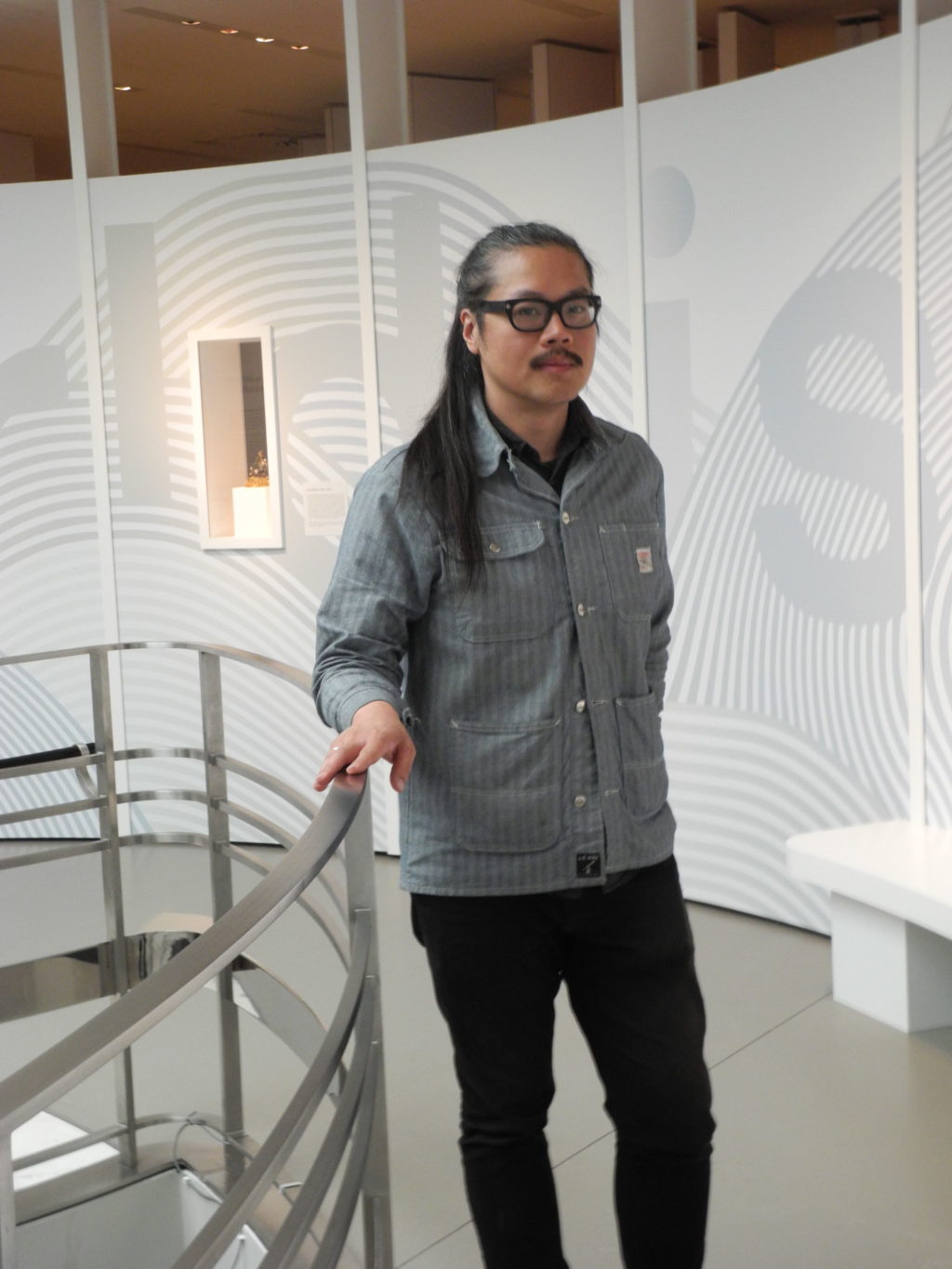NY exhibit features what creation of world sounded like

Artist C. Spencer Yeh poses for a picture during a preview of the exhibition “The World Is Sound” at the Rubin Museum of Art in New York City on June 15, 2017. Yeh asked artists to imagine the sound of the beginning of the universe as part of the exhibition, which explores the nature of sound and its relationship with the cosmos. / AFP PHOTO / Shaun TANDON
When the universe was born, what did it sound like?
The question underlies an inventive and challenging new exhibition in New York that explores the fundamentals of sound and how they relate to the quest to understand the self and the cosmos.
The Rubin Museum of Art, the 13-year-old institution devoted to India and the Himalayas, shakes off the visual bias of most exhibitions.
Instead, visitors to “The World Is Sound,” which opened Friday and runs until January 8, 2018, enter with their ears.
While the exhibition showcases visual artifacts, such as an 18th-century trumpet made of human leg-bone played in Tibetan funerals, the focus is on sound, which can be felt powerfully by putting on headphones, touching wall panels or even walking the spiraling six-floor staircase.
The highlight is a representation of “Om,” the holy mantra of Hinduism and Buddhism that is said to encompass all possible sounds—in effect, the universe itself.
In the months before the exhibition, the Rubin Museum, in New York’s Chelsea neighborhood, asked visitors to stop by a small recording studio and chant “Om.”
It collected 10,000 files and, through software, set them on three pitches to merge together into an hour-long “Collective Om” that plays continually in a meditation room with three-dimensional sound.
Hearing the Big Bang
Outer space is silent, with no air to carry the vibrations that cause sound. But the exhibition, expanding on the “Om” concept, asks artists to imagine the sound heard in the vibrations from the Big Bang, the sudden expansion of matter considered by astrophysicists to mark the birth of the universe.
C. Spencer Yeh, the Taiwanese-born artist who led the section, imagined a trio of 45 diverse and shifting computerized voices that say the letters “A,” “U” and “M,” which merge continuously together.
New York-born artist Samita Sinha’s work builds off a recitation of the Hindi alphabet. Another piece, by artist Jules Gimbrone, records and re-records a reciting of a text through a four-foot (1.2-meter) vessel of salt water until the voice is unrecognizable.
Yeh said he gave loose guidelines to the artists on imagining the sound of creation. Still, he was struck that almost all of the artists chose to use the human voice.
The exhibition also offers introductions into late experimental composer Pauline Oliveros’s concept of “deep listening,” which involves fully letting go to take in the sound of the environment.
Impermanence of sound
With sound just a matter of vibrations, does music have permanence?
The impermanence of sound is reflected at death in Tibetan custom. Visitors at the exhibition are invited to lie supine on a bench to hear recitations of the Tibetan Book of the Dead, which describe experiences in bardo, a sort of limbo between death and rebirth.
The book encourages the listener to channel positive energy, warning that a slip into darkness in the transient state could doom the journey to the next life.
“We take it for granted that music can make us cry, and can make us laugh, and can make us dance, and can make us have sex, and can make us stand in a field with 100,000 people and scream at the top of our lungs,” the electronic rocker Moby said in an interview as part of the exhibition.
“The fascinating thing with sound is that it has never been created,” he said. “There is no such thing as material sound.” JPV